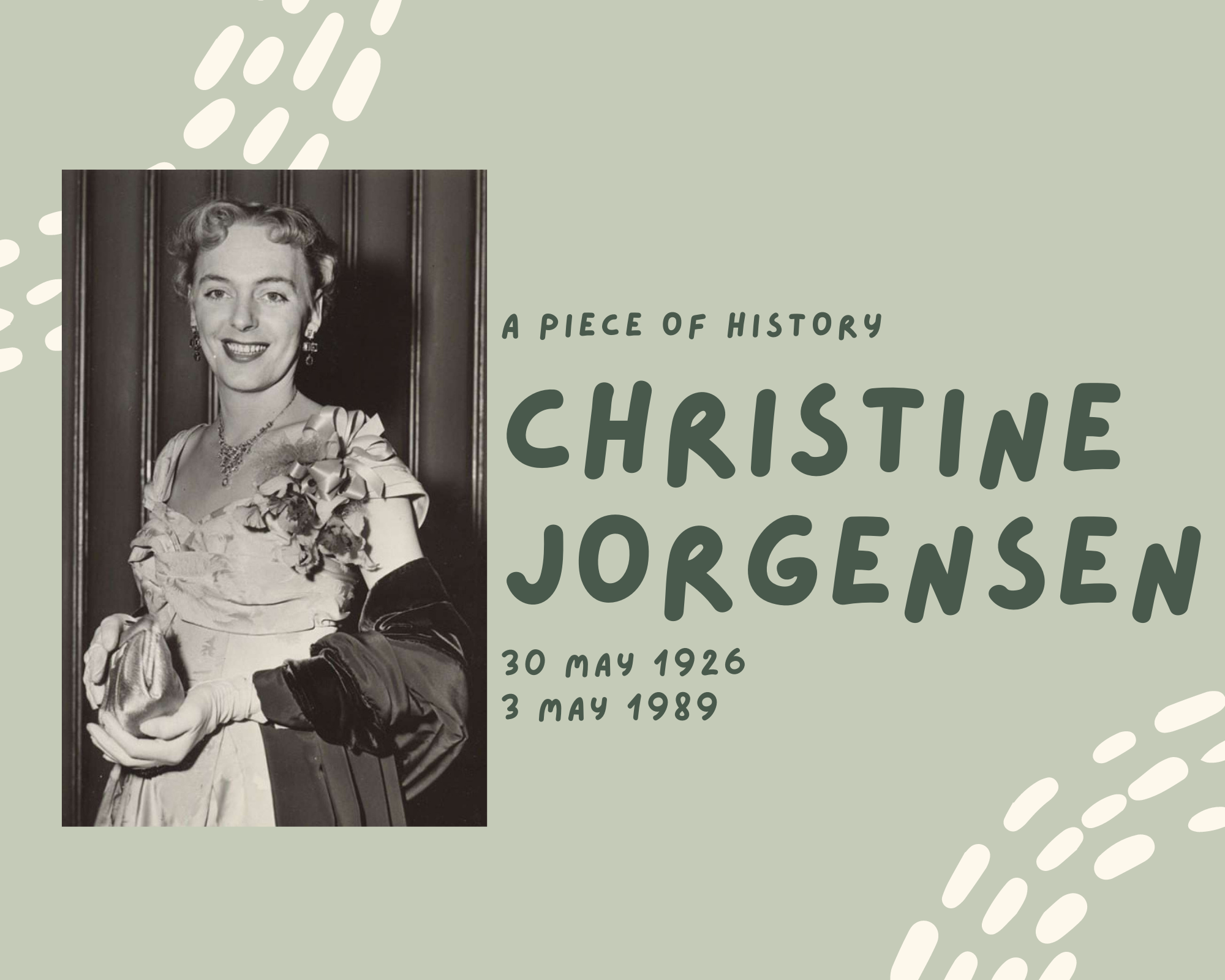📖 A Piece of History - Christine Jorgensen📖
Christine Jorgensen was born on the 30th May 1926 and assigned male at birth, She described herself as having been a "frail, blond, introverted little boy who ran from fistfights and rough-and-tumble games". During her childhood Jorgensen was said to have gravitated towards dolls and even recalls questioning her own identity to her mother “‘Mom’ i asked, ‘why didn't god make us alike?’ My mother gently explained that the world needed both men and women and there was no way of knowing before a baby was born whether it would be a boy or a girl.” Christine Jorgensen came from a close-knit family and her grandmother became her biggest champion and supported Jorgensen expressing her identity.
After Jorgensen graduated high school during World War II, she tried to enlist in the Army, but she was denied because of her dainty size and weight. However, a couple of months later she was drafted into the Army and stationed at Fort Dix, New Jersey. During Jorgensen’s service, she kept mostly to herself and concealed her attraction to men. At the time, many service members feared being exposed or labelled as a homosexual, which could get a soldier prison time, a dishonourable discharge, or court-martialled. Jorgensen explained that, “I wanted to be accepted by the army for two reasons. Foremost was my great desire to belong, to be needed, and to join the stream of activities around me. Second, I wanted my parents to be proud of me.” She laboured as a clerical worker, managing thousands of discharged soldiers after VE Day for 14 months until she herself was honourably discharged in December 1946.
After her military service Jorgensen went to photography school in New Haven, Connecticut and dental assistant school in New York City. Jorgensen still found herself unhappy with life and started to research more into what could be troubling her. Jorgensen came across an article about a Danish doctor, Christian Hamburger, who was experimenting with gender therapy by testing hormones on animals. She began to hope Hamburger would provide the solution to her problem.
Jorgensen's parents were both Danish-born so with family connections making it an easy trip to justify, in 1950 she headed to Copenhagen without telling anyone about her real intentions.
The first step towards becoming a woman was a long course of female hormones. Hamburger encouraged Jorgensen, for the first time, to take on a female identity and begin dressing as a woman in public. As the hormones began to take effect, Hamburger noted the changes in his patient ."The first sign was an increase in size of the mammary glands and then hair began to grow where the patient had a bald patch on the temple," he later said. "Finally the whole body changed from a male to a female shape." Jorgensen was also assessed by a psychologist, Dr Georg Sturup, who accepted the strength of her conviction that she wanted to proceed with sex reassignment surgery.
As a result, Sturup successfully petitioned the Danish government to change the law to allow castration for the purposes of the operation.
Finally, after more than a year of hormone therapy, Jorgensen went under the knife for the first of a series of operations that would attempt to change her genital organs from male to female. Unfortunately, she did not receive a surgically created vagina until years later when she was back in the United States. Before she returned to the United States, she had one last alteration to make in order to complete her transformation. She changed her name to Christine in honour of Dr. Hamburger’s work of making her dreams come true. After the procedure, Christine wrote to her parents back in New York: "Nature made a mistake which I have had corrected, and now I am your daughter. "Her family seemed to be very supportive of her decision and she later said her mother had always known her son had been different.
Jorgensen went on to be an entertainer and performed in many nightclubs. She wanted to be a Hollywood star but never made it big. She had several romantic relationships and was engaged twice, but unfortunately, she was denied a marriage license because her birth certificate identified her as a male. To compound her struggles, one of Jorgensen’s fiancés also lost his job when their engagement became known. However, she remained confident and optimistic about life, and in 1967, Jorgensen wrote an autobiography titled Christine Jorgensen: A Personal Autobiography. Throughout her life, she received thousands of letters, both positive and negative, but the majority of the letters were from others with the same problems asking for help and guidance. She only wished that she could help all the individuals who reached out to her, but in a way she did by staying true to her identity and being a role model for others. Jorgensen went on to use her story to lecture at colleges across the United States on gender identity. Her life captivated and influenced so many that, in 1970, Hollywood created a film based on Jorgensen’s life called, ‘The Christine Jorgensen Story’
Just a few years before her death, she travelled back to Denmark for a reunion with the doctors who had helped her through her transformation. Speaking to the media, she acknowledged the milestone her case represented.
Jorgensen died of cancer at the age of 62, in 1989.
Sources:
https://www.nationalww2museum.org/war/articles/christine-jorgensen
https://www.bbc.co.uk/news/magazine-20544095
https://www.biography.com/activist/christine-jorgensen
https://wams.nyhistory.org/growth-and-turmoil/cold-war-beginnings/christine-jorgensen/





